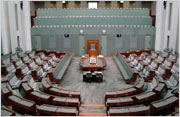Education - Australia Contemplates Bang For The Buck
The Federal Government says Australia needs to get better results from education funding after an influential international report said that despite investing admirably in education, but slid backwards in some indicators.
The Organization for Economic Cooperation and Development's (OECD) annual "Education at a Glance" report says that Australia invested 13.8 percent of total public spending to education in 2013. That beats the average among 32 OECD nations of 11.3 percent, putting Australia in fifth place. It also showed Australia's public schools have smaller class sizes than private schools, and that teachers earn incomes above the OECD average.
But Aussie primary schools have three more students per class than the OECD average, which ATU federal president Correna Haythorpe believes supports the Gonski Review's recommendations for needs-based funding. "This report is more evidence that needs-based funding was necessary to address this bias and reduce achievement gaps between schools," Ms Haythorpe said as quoted by Nine News.
Education Minister Simon Birmingham is seizing on the part of the report that says, "Higher levels of expenditure on education cannot automatically be equated with better performance by education systems." It continues, "This is not surprising, as countries spending similar amounts on education do not necessarily have similar education policies and practices.
Not everyone agrees with that.
"It says there's no simple relationship between overall spending on education and the level of student performance," says school education expert Dr. Peter Goss of the Grattan Institute in an interview with the ABC. "That's like saying, if I pay more for premium ingredients, that doesn't necessarily mean I'm going to cook a nicer meal."
Dr. Goss says that more spending "enables the possibility of better outcomes. And different evidence shows that when the most disadvantaged schools get more money, they typically do better with it."
The OECD advocates for tuition fees supported by income-contingent loans, seeing such systems as a means to increase funding for higher education while expanding access. "Countries with a low level of tuition fees do not appear to achieve better access to tertiary education than those with higher fees," the report says. "Australia, Denmark, New Zealand and Slovenia all have first-time entry rates to tertiary education above 70 percent for national students, but Denmark and Slovenia have no tuition fees, while public institutions in Australia and New Zealand (both with income-contingent loans) charge average annual tuition fees of over US$4,000."








 Create PDF
Create PDF Print
Print Email to friend
Email to friend